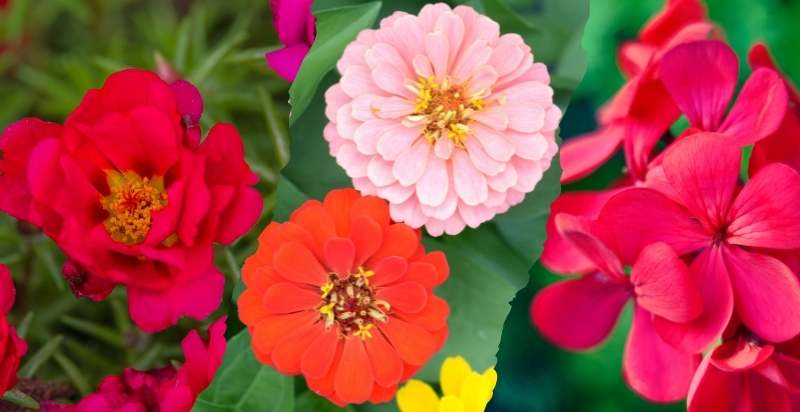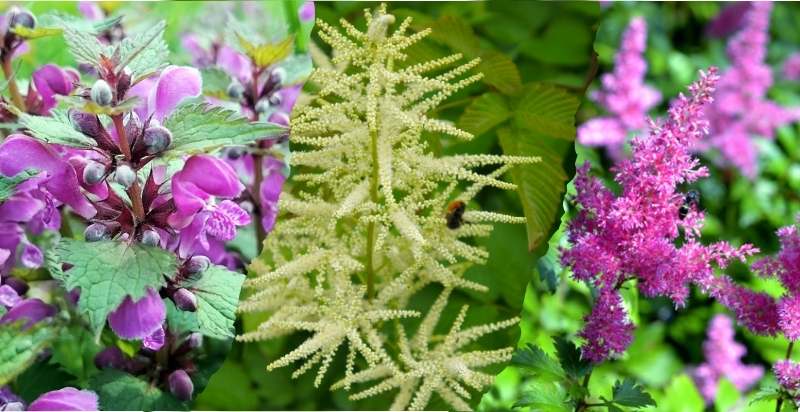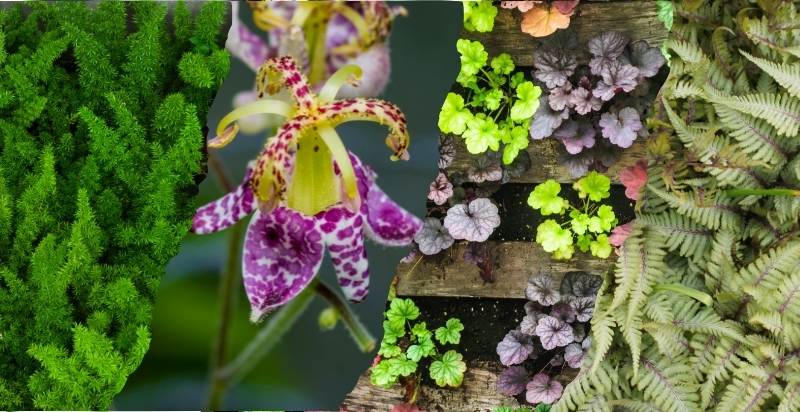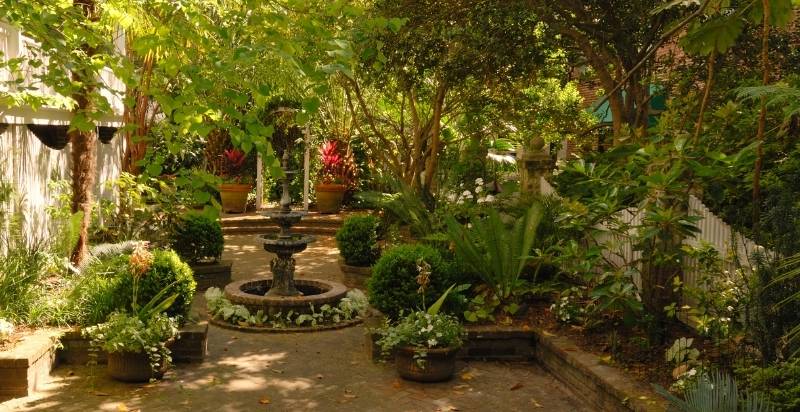A shade garden is a garden that is planted in an area that receives little or no direct sunlight. Shade gardens can be created under trees, on the north side of buildings, or in any other location where sunlit gardens are impossible.
Shade gardens can be divided into three categories: full shade, partial shade, and dappled shade. Full-shade gardens receive less than four hours of direct sunlight daily, while partial-shade gardens receive four to six hours of direct sunlight. Dappled shade gardens receive six to eight hours of direct sunlight, with some areas receiving full sun and others receiving full shade.
Shade gardens can be filled with various beautiful plants, including ferns, hostas, impatiens, and begonias. These gardens provide a cool and relaxing retreat from the summer heat, and they can also add color and interest to areas that would otherwise be barren or boring.
Creating a shade garden is a great way to add beauty and interest to your landscape. With a little planning, you can create a shady retreat that will be the envy of your neighborhood. So lets get started but first lets starts with the basics :
What Are The Benefits Of A Shade Garden?
When most people think of gardening, they envision a sunny spot in their yard where they can grow colorful flowers and tasty vegetables. However, for those with a shady area in their landscape, a shade garden can provide a beautiful and serene retreat from the hot summer sun. In addition to being a cool oasis, there are many benefits to growing a shade garden.
A shade garden is an area of the landscape that receives less than six hours of direct sunlight per day. While this may seem limited, many plant options thrive in shady conditions. And because these plants don’t require as much sunlight, they are often easier to care for than sun-loving varieties.
Another benefit of shade gardens is that they can help conserve water. Because shady areas are cooler, evaporation is reduced, and plants will require less watering. This is especially beneficial in regions where water shortages are a concern.
In addition to being low-maintenance and water-wise, shade gardens can provide wildlife a haven. Butterflies, birds, and other animals are attracted to these gardens’ cool, moist conditions. So not only are you creating a beautiful space for yourself, but you’re also providing a valuable habitat for local wildlife.
Whether you’re looking to add some curb appeal to your home or create a tranquil space to relax in, a shade garden can be a great addition to your landscape. With a little planning, you can enjoy all the benefits of a shade garden and have a beautiful outdoor space for years to come.
How Do You Choose Plants For A Shade Garden?
When choosing plants for a shade garden, it is important to consider the amount of sun and shade the area receives. Many beautiful plants thrive in shady areas, so do not be discouraged if your garden is mostly or entirely in the shade. You can find the ideal plants to provide colour and life to your area with a little exploration.
Sun and Shade
To get started, look at how much sun and shade your garden gets throughout the day. Ask a local nursery or gardening center for help if you are unsure. Once you know how much sun and shade your garden gets, you can start narrowing down which plants will work best.
There are three main light conditions: full sun, partial sun, and full shade. Full sun means the area gets six or more hours of direct sunlight daily. Partial sun means the area gets three to six hours of direct sunlight daily, and full shade means less than three hours of direct sunlight per day.
Full Sun Plants
Many beautiful plants thrive in full sun conditions. Some examples include:
- Portulaca (commonly known as moss rose)
- Zinnia
- Marigold
- Impatiens
- Geranium

Partial Sun Plants
Many lovely plants do well in partial sun conditions. Some favorites include:
- Coleus
- Fuchsia
- Begonia
- Caladium
- Hosta

Full Shade Plants
There are plenty of stunning plants that prefer full-shade conditions. A few examples are:
- Ferns
- Lamium (commonly known as deadnettle)
- Aruncus (commonly known as goat’s beard)
- Astilbe
- Hakonechloa (commonly known as Japanese forest Grass)

Soil Conditions
In addition to considering the amount of sun or shade your garden gets, it is also important to consider the type of soil you have. Different plants prefer different types of soil, so this will help you narrow down your options even further.
If you are still determining what type of soil you have, you can take a sample to your local nursery or gardening center, and they will be able to help you out. Once you know the soil type, you can start looking for plants that prefer those conditions.
Some plants prefer sandy soil, while others prefer clay soil. Some like acidic soil, while others prefer alkaline soil. There are even plants that do well in salt water! Do some research to determine which type of soil your chosen plants prefer, and then ensure you provide those conditions in your garden.
Watering Needs
When choosing plants for your garden, it is important to consider how much water they need. Some plants are drought resistant and do not need a lot of water, while others require moist or wet conditions.
If you are still determining how much water a plant needs, ask your local nursery or gardening center for help. They can give you specific watering instructions for your chosen plants.
Popular Shade Garden Plants:
Now that you know a little bit about what to look for in shade plants, here are some popular options to choose from:
- Foxtail fern (Asparagus meyeri)
- Toad lily (Tricyrtis hirta)
- Japanese painted fern (Athyrium niponicum var. pictum)
- Coral bells (Heuchera sanguinea)
- Barrenwort (Epimedium x versicolor)
Once you have selected the right plants for your shade garden, you can design the layout. When designing a shade garden, it is important to create a sense of depth and interest. Use taller plants in the back of the garden and shorter plants in the front—group plants by height, color, or texture to create visual interest. And remember to add a few pops of color with annuals or bulbs.

How Do You Care For A Shade Garden?
Shade gardens can be difficult to care for because they often lack direct sunlight, which can cause growth problems and make it difficult to keep plants healthy. You can help care for your shade garden by doing a few things, though such as :
Watering
One of the most important things you can do for a shade garden is to water regularly. This will help plants get the moisture they need to grow and stay healthy. Check the soil regularly to see if it is too dry or too wet, and adjust your watering schedule accordingly.
Fertilizing
If plants in your shade garden are not growing well, it may be necessary to fertilize them. Use a fertilizer designed for shady areas to avoid harming plants. Follow the fertilizer application instructions on the container.
Pest Control
Pests can be a problem in any garden, but they can be complicated to control in a shade garden, and this is because pests often thrive in dark, moist conditions. If you have a pest problem in your shade garden, try using traps or pesticides designed for use in shady areas.
Weeding
Weeds can also be a problem in shade gardens. They compete with other plants for space and nutrients, making it difficult to keep the garden looking tidy. To control weeds, pull them by hand or use a weed killer designed for use in shady areas. Be sure to follow the directions carefully to avoid harming other plants.
Problems With Shade Gardens:
One of the most common problems with shade gardens is that they can be difficult to keep moist. This can be a problem because many plants need moist conditions to grow. If your shade garden is too dry, try increasing the water you give it or adding a layer of mulch to help retain moisture.
Another common problem with shade gardens is that they often lack direct sunlight, making it difficult for plants to photosynthesize and grow. If your shade garden needs more light, try moving it to a different location or planting sun-loving plants that can tolerate shady conditions.
Finally, shade gardens can be difficult to care for because they often have high humidity levels, which can cause mold and mildew problems. If your shade garden is too humid, try using a fan to circulate the air or planting plants that tolerate high humidity levels.
Some Tips For Designing A Shade Garden: Perfect For Your Home and Lifestyle
When designing a shade garden, the first thing to consider is what type of plants will thrive in shady conditions. Once you have determined what plants you want to include in your garden, you can begin planning the layout and design. Here are some tips to help you create the perfect shade garden for your home and lifestyle:
- Choose the right plants: Not all plants do well in shady conditions, so choosing varieties that will thrive in your garden is important. Some good options for shade-loving plants include Hostas, Ferns, Impatiens, and Begonias.
- Consider the amount of sun and shade in your garden: The amount of sun and shade in your garden will determine how much light your plants will receive. If your yard receives a lot of shade, you must pick plants that can survive in dim lighting. On the other hand, if your garden receives more sunlight, you can select plants that like it brighter.
- Create different levels of shade: One way to add interest to your shade garden is to create different shade levels. This can be done by planting taller plants in the back and shorter plants in the front. You can also use trees, shrubs, and structures to create different shade levels in your garden.
- Add some color: Shade gardens don’t have to be all green. Adding some color with flowers or foliage can brighten up your garden and add visual interest.
- Use containers: If you have a small space to work with or want to add height to your garden, using containers is a great option. You can fill them with shade-loving plants such as Hostas, Ferns, Impatiens, and Begonias.
You can create the perfect shade garden for your home and lifestyle with these tips.

Popular Trends In Shade Gardening Right Now:
There are many popular trends in shade gardening right now. These include using native plants, planting in layers, and using colors to create contrast.
Native Plants
One popular trend in shade gardening is using native plants. Native plants naturally occur in an area, are adapted to the local climate and soil conditions, and can often be more resilient to pests and diseases. Using native plants in your garden can help to create a more sustainable ecosystem.
Planting in Layers
Another popular trend in shade gardening is planting in layers. This means creating different levels of vegetation within your garden bed. For example, you might plant taller trees or shrubs at the back, shorter shrubs or perennials in the middle, and ground cover or bulbs at the front. This can help to create a more interesting and dynamic garden space.
Using Colors to Create Contrast
Another popular trend in shade gardening is using colors to create contrast. This can be done by planting foliage plants with variegated leaves or flowers in bold colors. This can help to brighten up a shady area and make it more visually appealing.

Conclusion
Shade gardens can be a beautiful and low-maintenance addition to your home. However, they require some planning and care to ensure your plants thrive. By following the tips in this guide, you can create a stunning shade garden that will be the envy of your neighborhood.
- Everything You Wanted to Know About Red Tamarillos - June 2, 2025
- A Guide to Tulips: Everything You Need to Know & More… - June 2, 2025
- Guanabana: Description, Flavor, Benefits, And Uses - May 27, 2025

7 thoughts on “How To Design Your Shade Garden ”